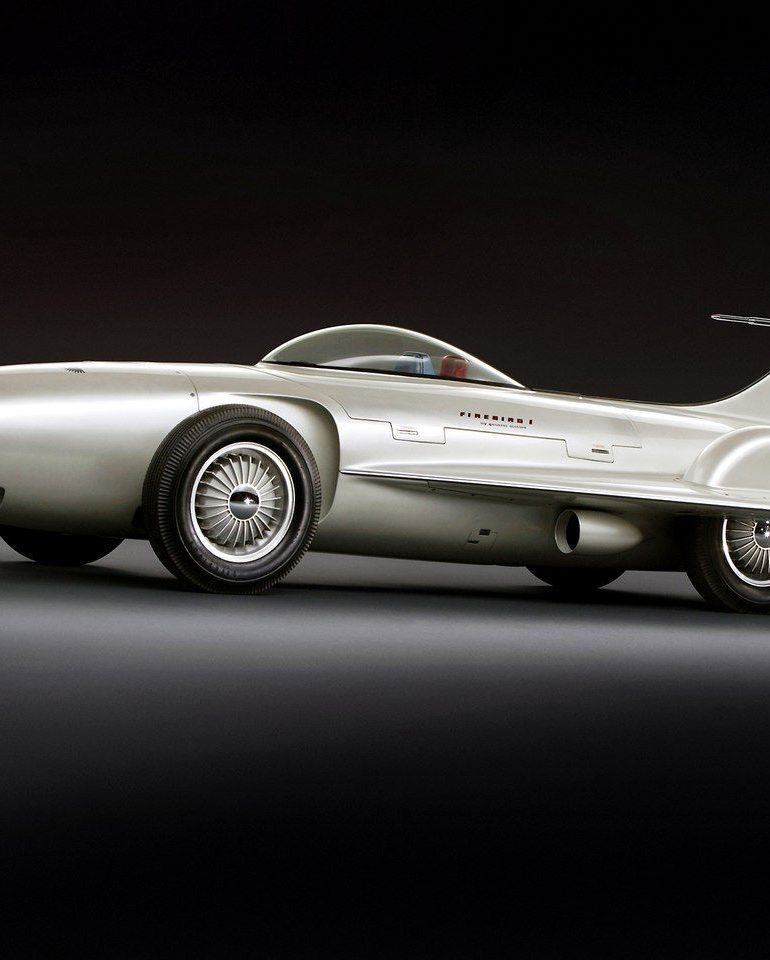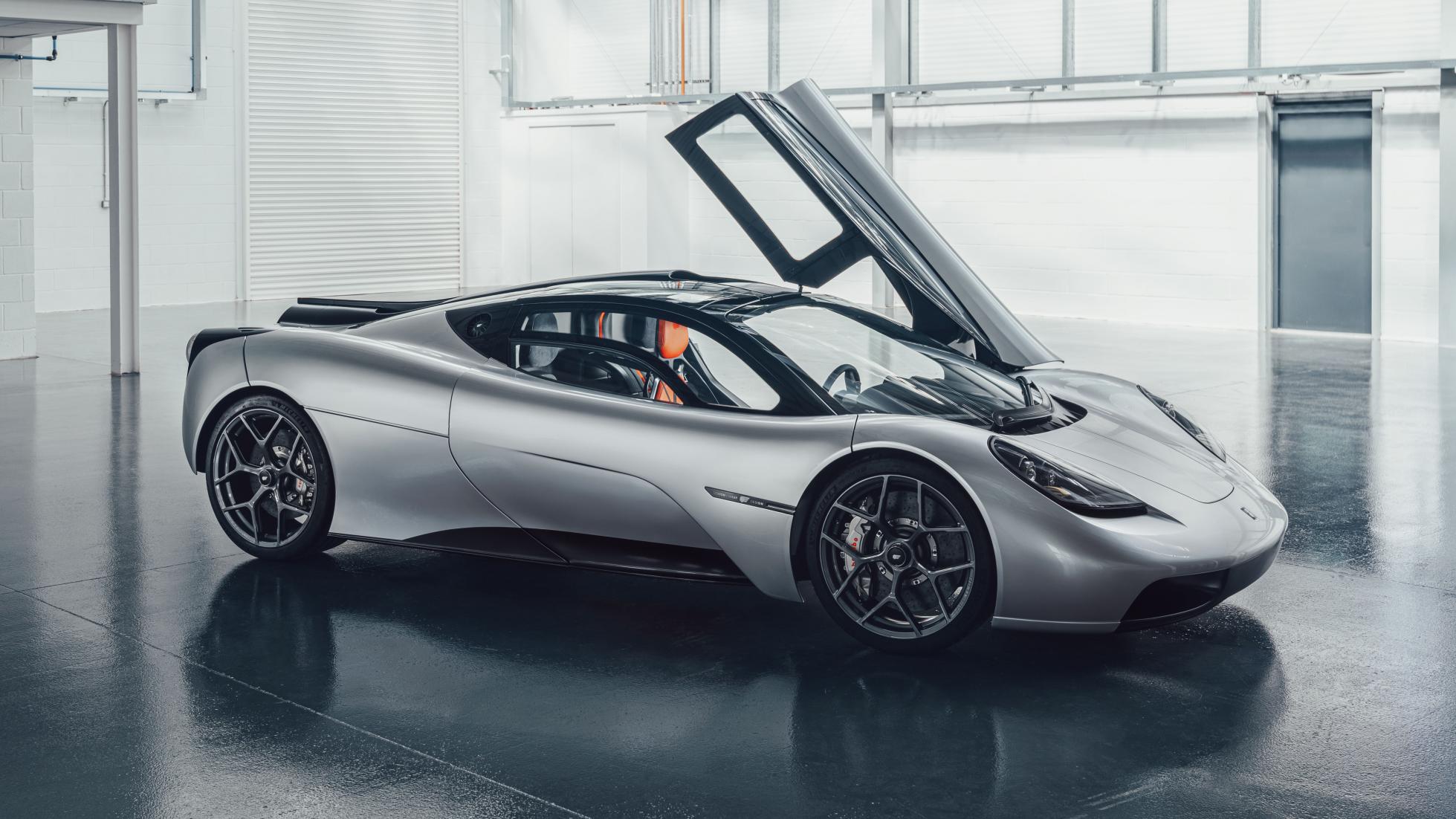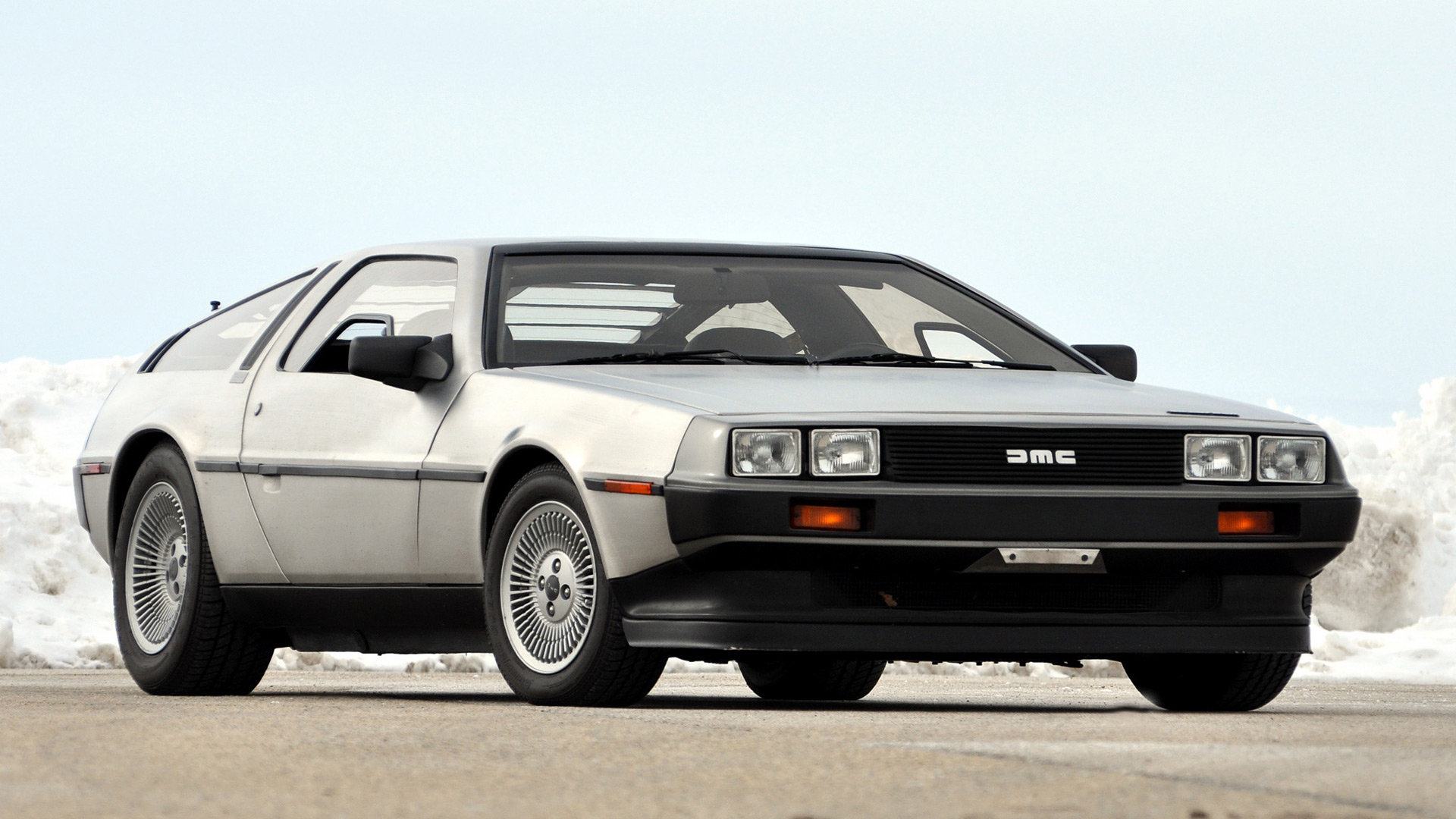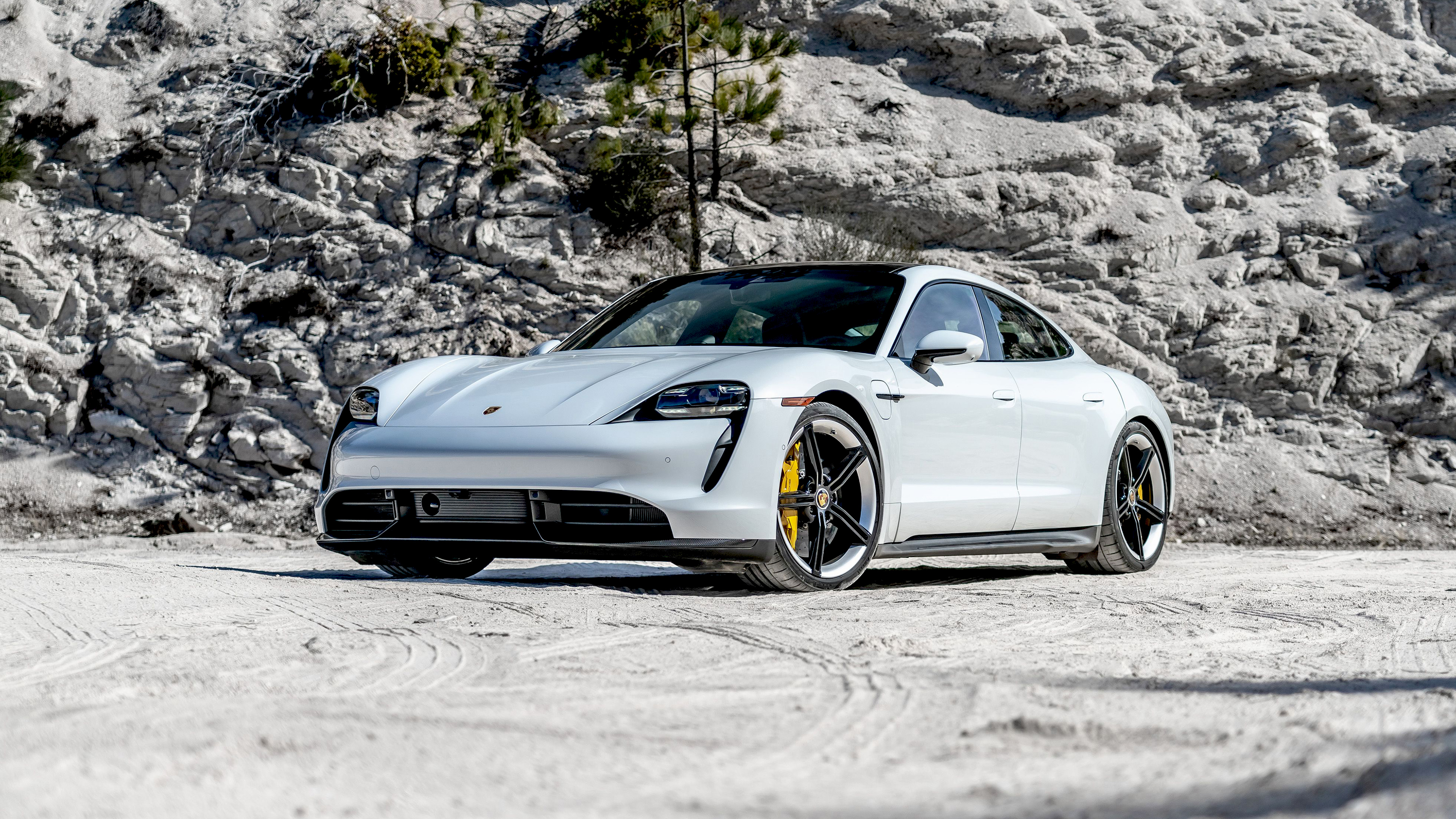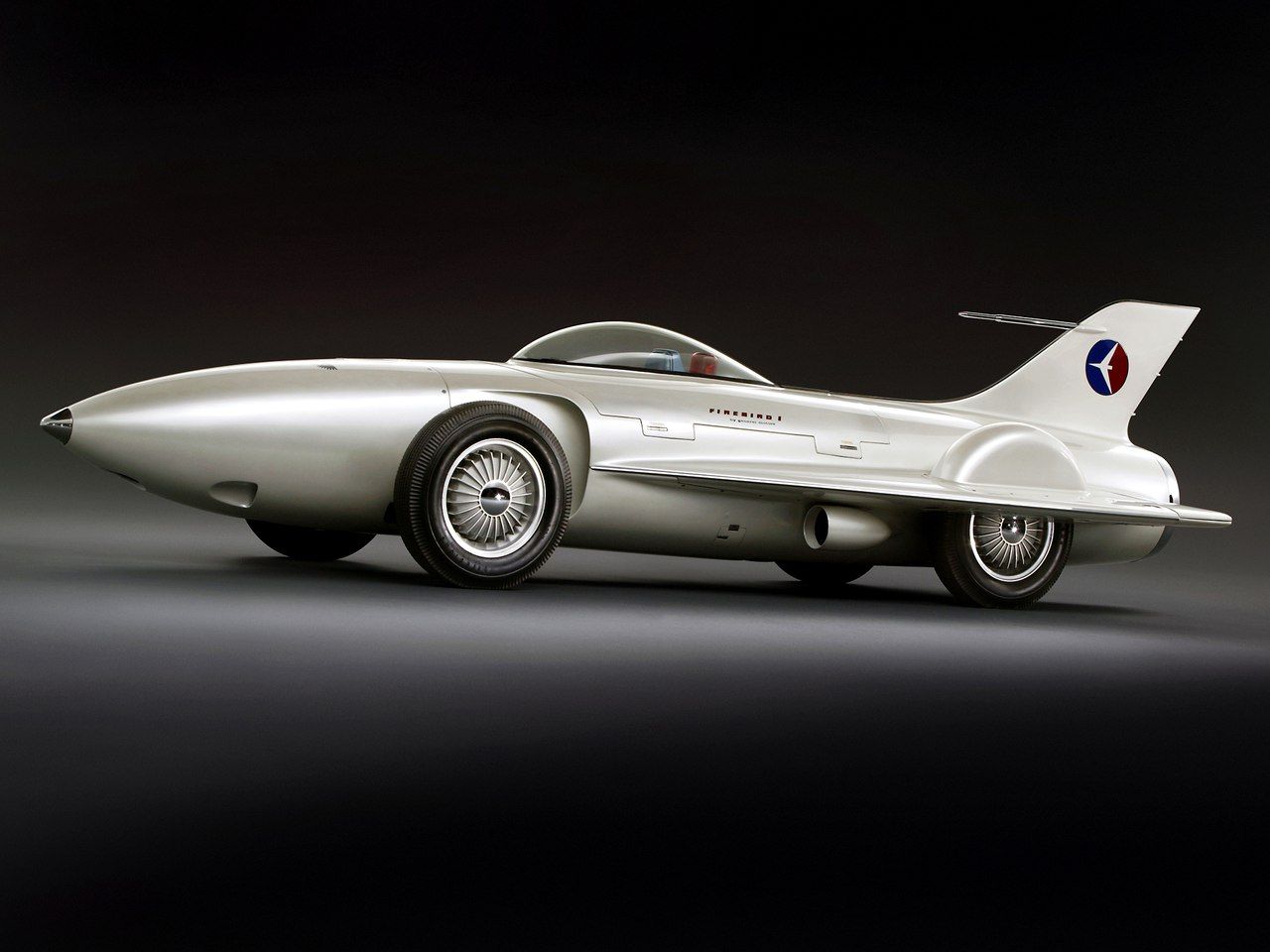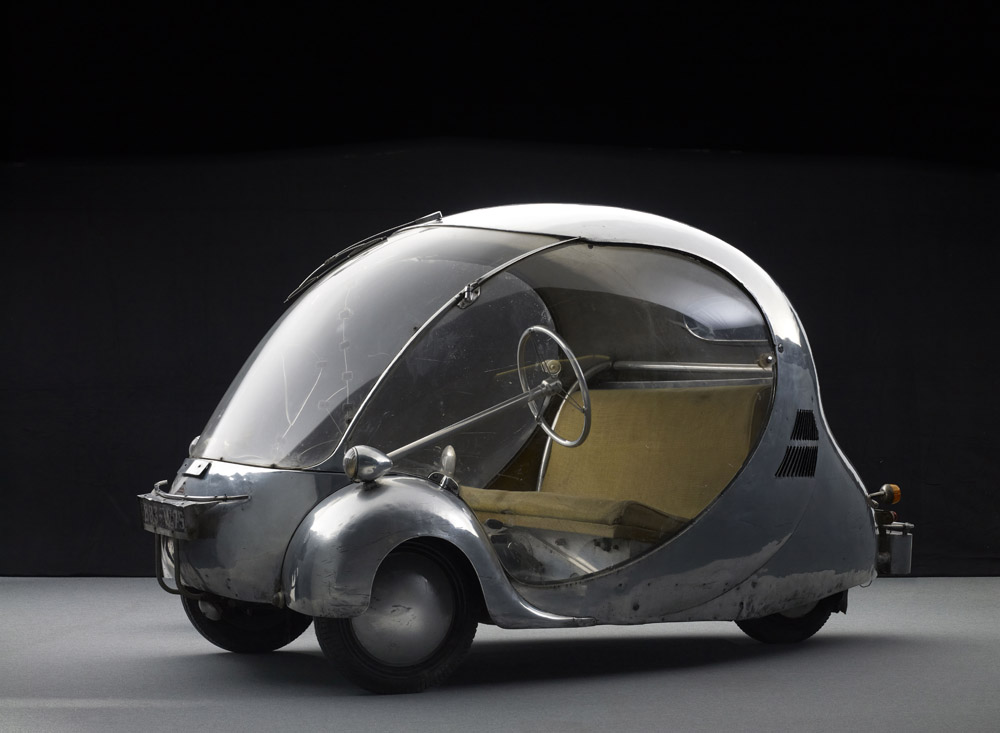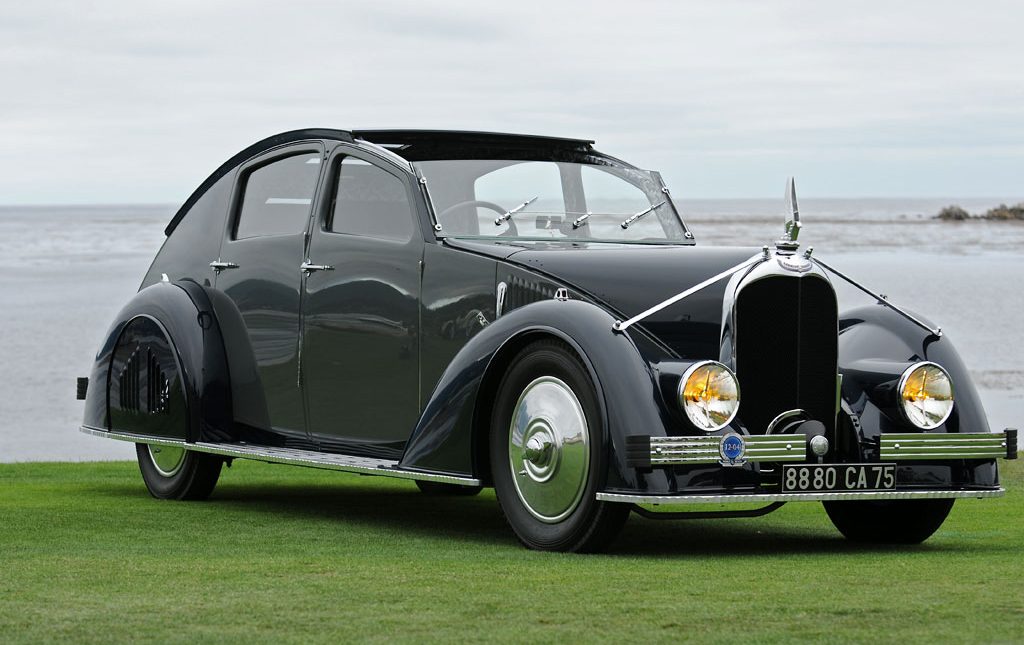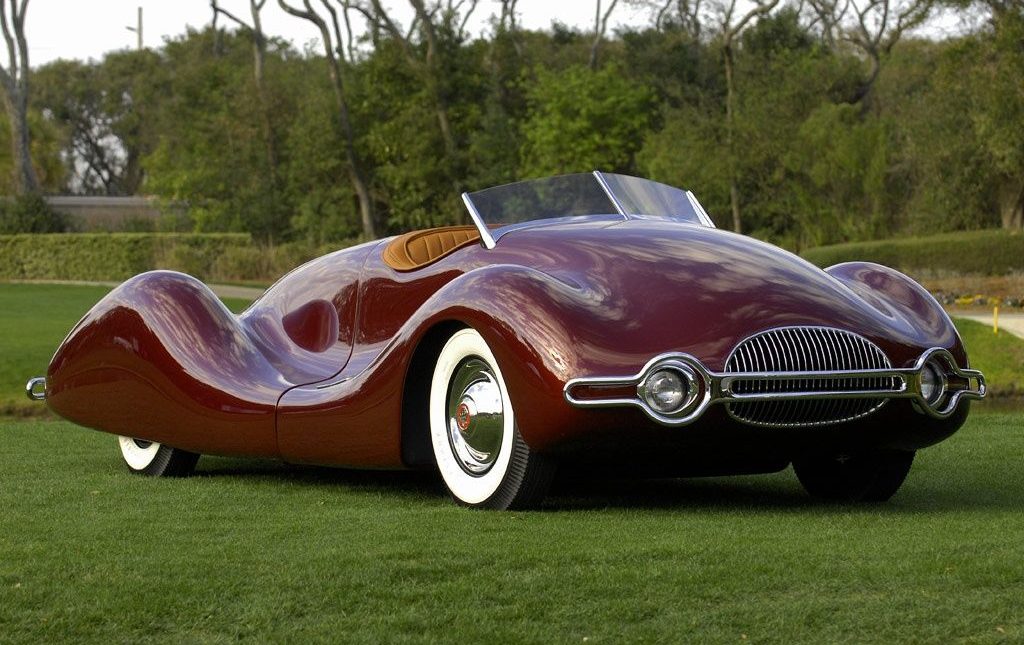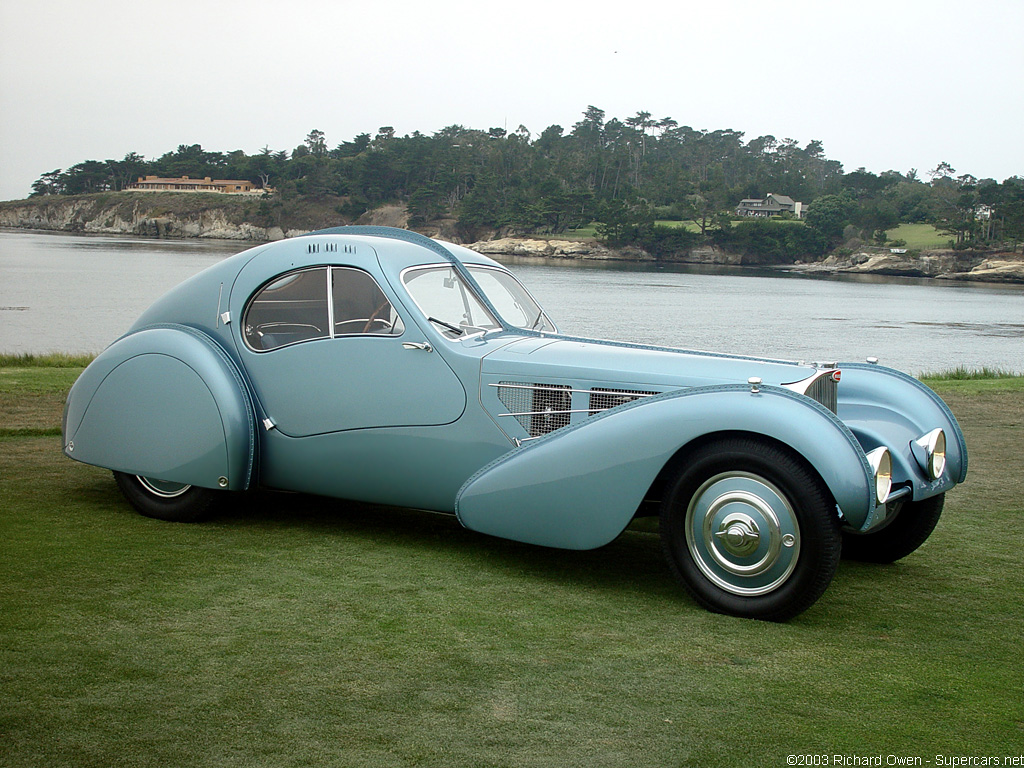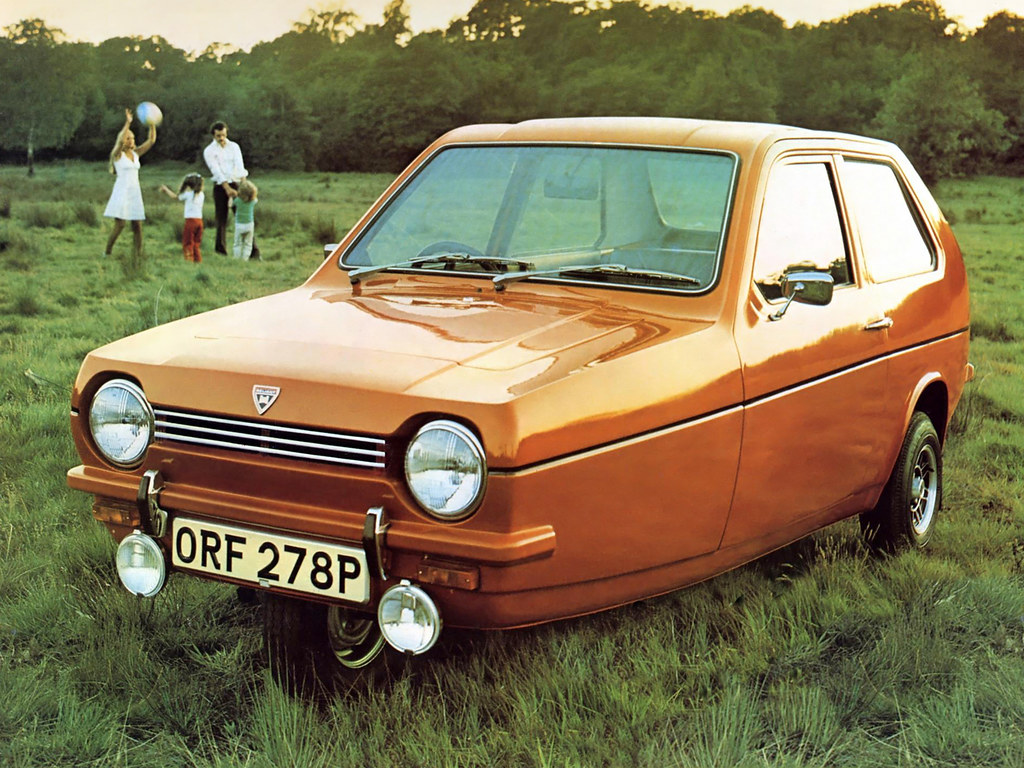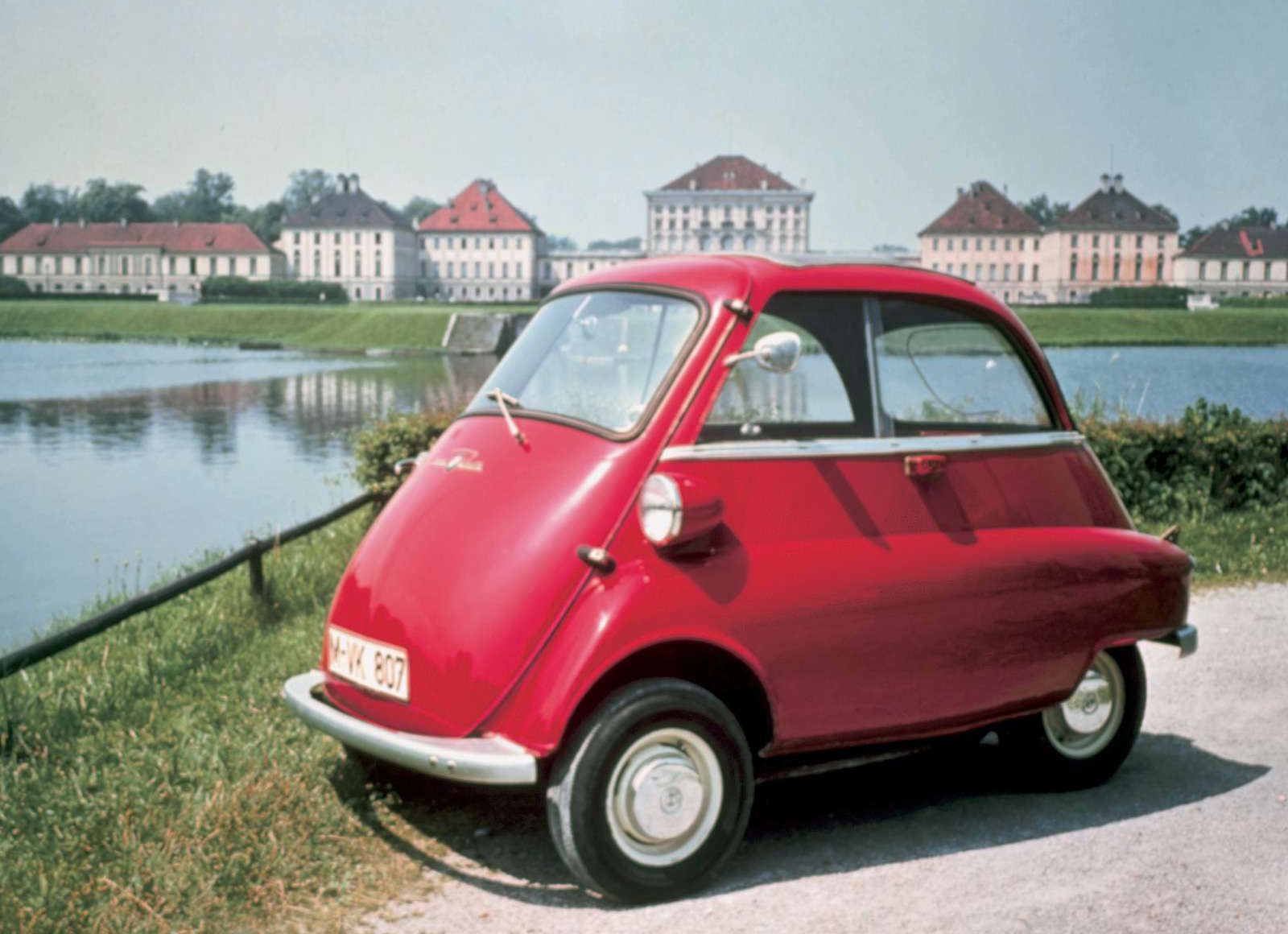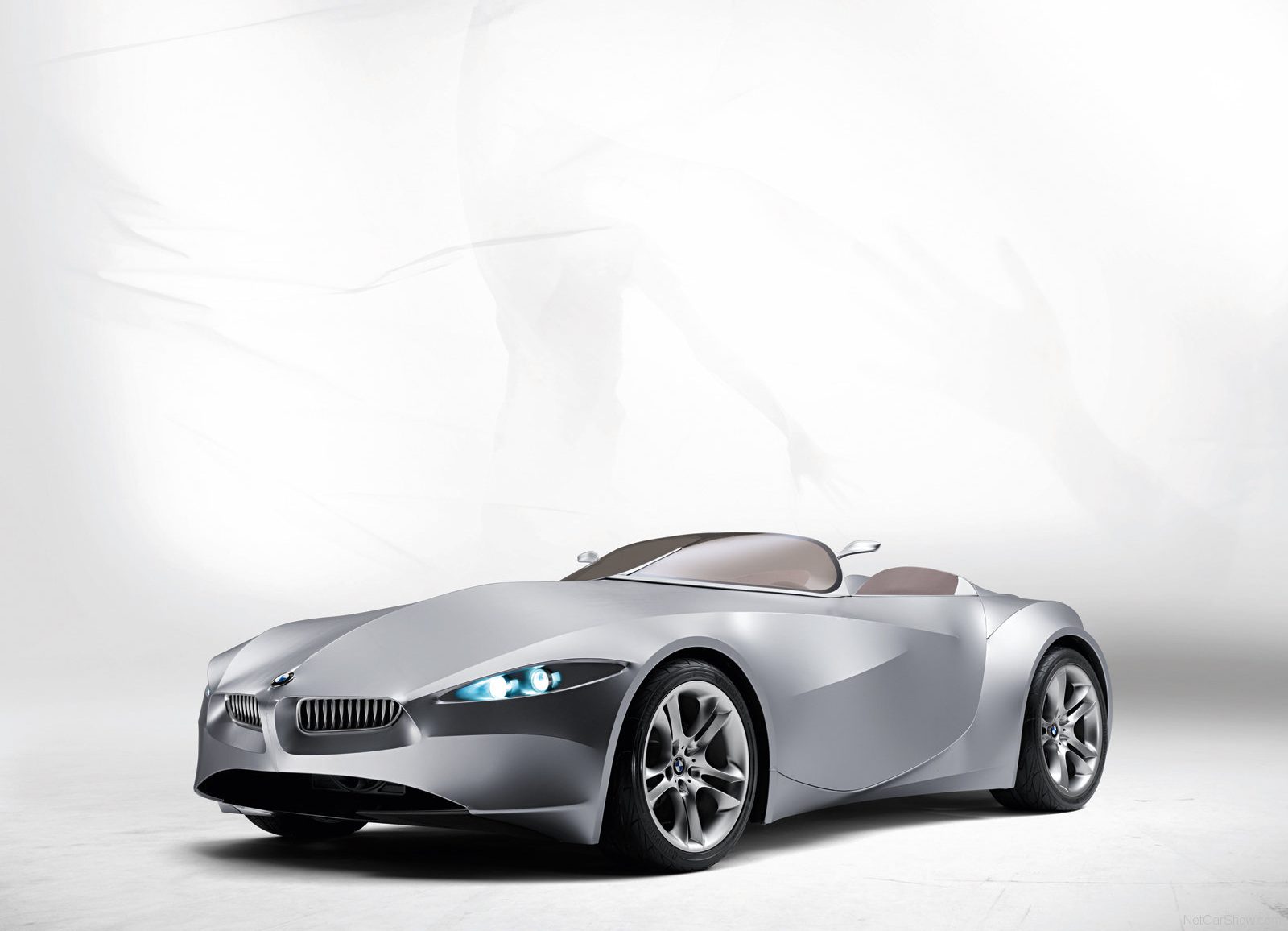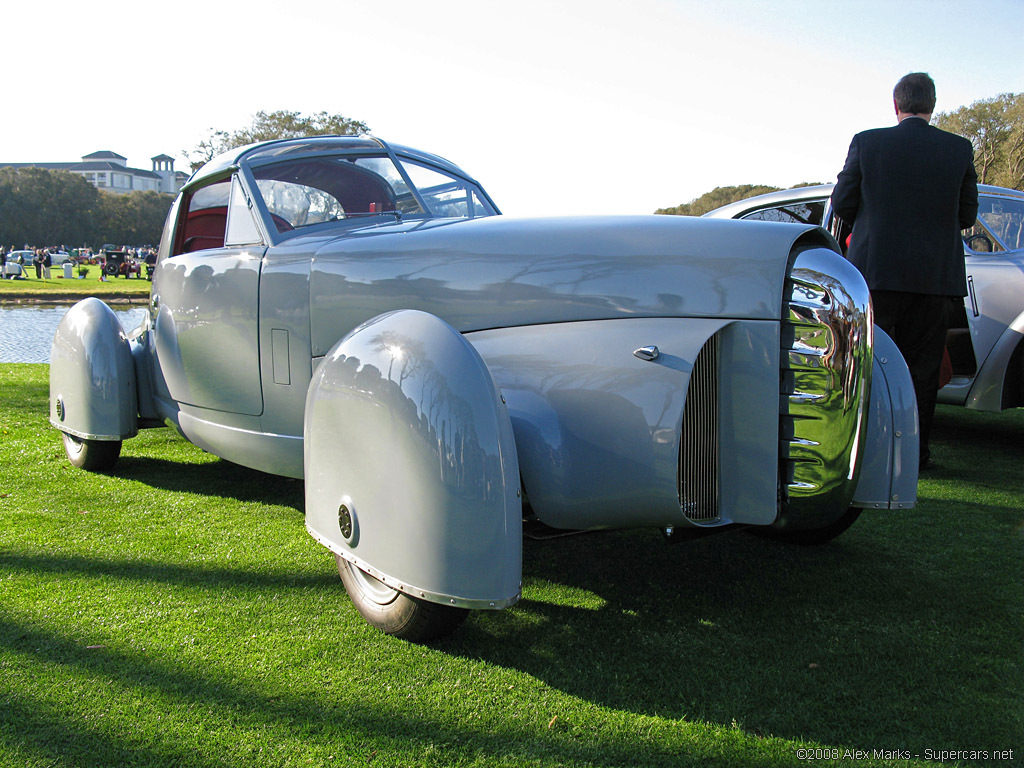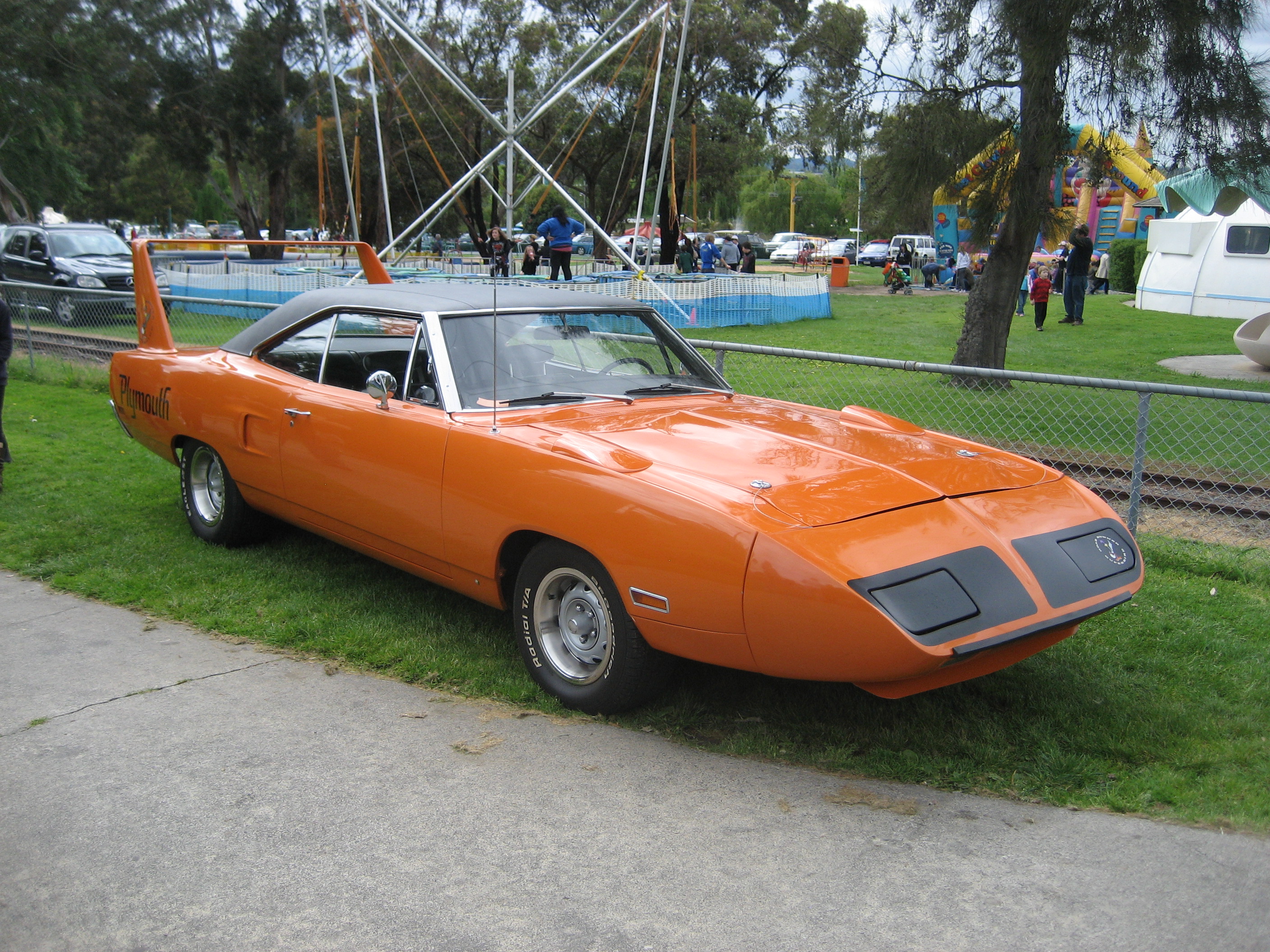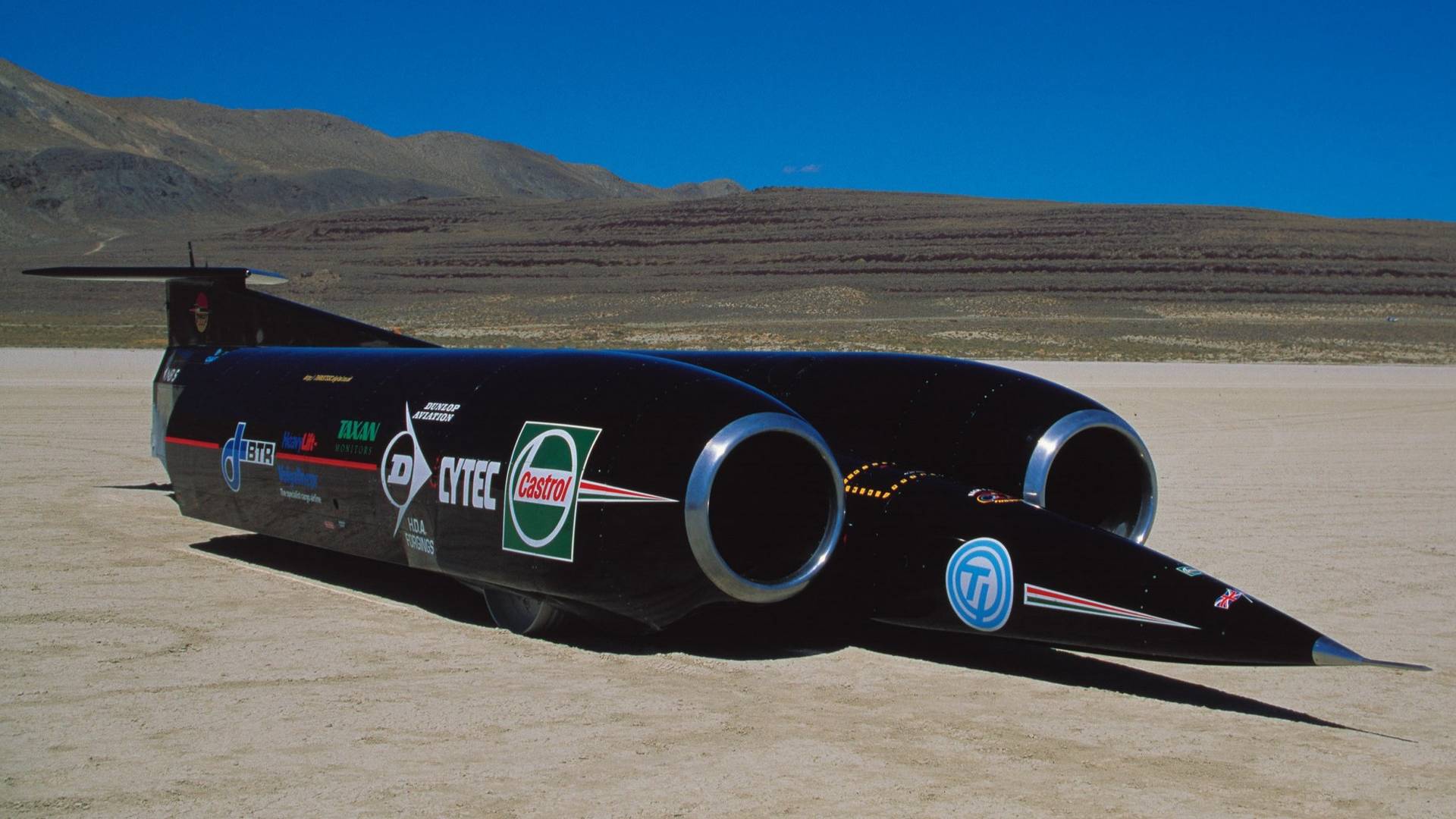The Coolest and Most Unique Cars Ever
Since the dawn of the production vehicle, consumers have had the privilege of witnessing many of the most bold and brilliant moments in the modern world. Whether they be of a technologically or philosophical persuasion, several cars have gone on to define eras, change perceptions and even improve societies.
Though not every such car would go on to serve much, if any, practical or mainstream use, they still piqued our imaginations and showed us a world full of possibilities. It is this extremely optimistic and forward-looking outlook which has allowed the automotive industry to progress to where it is today, and we believe that every car on this list has contributed to this think tank in one way or another.
From the audacious to the sublime. From the gauche to the lustrous. From the fantasized to the realized. Here is our list of the 25 Coolest and Most Unique Cars Ever Made.
1. 2021 GMD T.50
Publishing this list was basically put on hold just so that we could include this car. Gordon Murray – famed designer of the McLaren F1 – has sought to reintroduce a driver-focused car in an era where computers and fancy electronics ultimately determine how a car is allowed to be driven.
What this means is that the new GMD T.50 is a hyper car that does things differently from the others. For starters – besides its 12,100 rpm red line – there is nothing that stands out from the car as far as specs go.
On a closer inspection, it is clear that conventional benchmarks such as 0-60 mph times, top speeds or even aerodynamic figures are not any of the car’s strong points.
The reason it commands a £2.4 million purchase price becomes considerably less deceiving once you drive it. This car was designed to deliver the most immersive driving experience possible. At the forefront of this is the return of a 6-speed manual transmission.
It is the new-age rendition of the ultimate driver’s car – and if anyone should oversee making such a car, it is Mr. Murray. Most significantly, it is likely to be the last “analogue” supercar in history.
2. 1981 DeLorean DMC-12
If there was ever a car that could define an entire generation, it would have to be the Delorean DMC-12. Its peculiarly desirable silhouette – with a blend of both futuristic and retro looks – would go on to catapult it to cult status as one of the co-stars of the Back to the Future movie series.
Through the scope of being an actual automobile, there is nothing particularly desirable or outstanding about it. Its 130 hp engine could only propel the car from 0-60 mph in just under 10 seconds, which makes you wonder how Marty McFly even got up to the 88 mph needed to traverse the flow of time.
The good news is that DeLorean as a company still exists and offers restoration services for your DMC-12. You can also commission some upgrades which will bring it a notch closer to modern standards, including an engine tuning package which will allow the stock power plant to produce over 200 hp.
3. 1970 Lancia Bertone Stratos HF Zero
As a precursor to the legendary Stratos HF rally car, Bertone built this one-off prototype for the 1970 Turin Motor Show. Its dramatic wedge shape had a profound effect on later automotive design including many of Bertone’s later cars for Lamborghini and Alfa Romeo. It rivaled the Ferrari Modulo which was also revealed at the Turin show by Pininfarina.
This remarkable car was the work of Marcello Gandini at Bertone. With its space-inspired lines, Nuccio Bertone was initially going to call the car the Stratolimite before the final name was chosen. The wedge shape preceded the Stratos by two years when Bertone launched the Alfa Romeo Carabo in 1968.
Some of the unique features of the prototype included twin side windows which allow viewing of the integrated mirrors. Additionally, the one-piece front window was hinged at the rear to allow access to the cockpit while a triangular hood offered access to the Fulvia engine. For easier in-and-out access, the steering column was collapsible and made by Gallino-Hellebore.
Other unique design elements included a slim row of headlights flanked the front end. And a rear section largely made of mesh and surrounded by a strip of taillights which used 84 bulbs.
This prototype was used in Michael Jackson’s 1988 film, Moonwalker.
4. 2021 Tesla Roadster
The original Tesla Roadster was unveiled in 2007, boasting a top speed of more than 130 mph, a range of 250 miles on a single charge and a 0-60 mph time of about four seconds. Its brief production run from 2008-2012 would set the foundation on which Tesla would proliferate its product to the mass-market via the Model S, Model X and Model 3.
Tesla CEO Elon Musk has confirmed a return of the Roadster to the line-up, equipped with vast improvements over the first iteration. Time has been kind to the Roadster in this sense, as it looks to benefit from nearly a decade of additional R&D.
This go-around, the Roadster is said to achieve a 0-60-mph time of 1.9 s and a top speed of 250-mph. The new and improved 200-kWh battery is projected to provide up to 620 miles of range on a single charge when driven in a range-conscientious manner.
5. 2020 Porsche Taycan Turbo S
The Porsche Taycan is the German sports car manufacturer’s new production electric vehicle. It was designed to inject that soul that we have come to know and love from the company, into a new platform that is powered entirely by electricity. Through this, it also has the distinction of going down in the books as the car that ushered in Porsche’s first leap into electrification.
With the introduction of the Taycan, we enter a new age for Porsche vehicles and really, a new age for all cars. The Taycan demonstrates that electric cars no longer have to be something that is full of compromises. This car seeks to make an electric car as impressive – if not better – as any other Porsche on the road.
The flagship Turbo S generates up to 750 hp and accelerates from zero to 100 km/h in just 2.8 seconds and a top speed of 260 km/h. Its 93.4 kWh liquid-cooled lithium-ion gives it a range of up to 412 km.
Currently available in three trims (4S, Turbo and Turbo S), the Taycan will be made available in additional trims and variants over the lifespan of the model.
6. 1953 General Motors Firebird 1 XP-21
The 1953 XP-21 Firebird 1 is remarkable and very easily differentiated from just about anything else designed for the road. Though it resembles a jet airplane, its styling was more a nod to inspiration rather than to practical engineering design principles.
Its primary purpose was actually an exercise in determining whether a gas turbine engine could be used as a viable powerplant for production vehicles; the aptly named ‘Whirlfire Turbo-Power’ engine jet-propelled the Firebird 1 via its rear wheels and a transmission.
Quirky to say the least, this design produced over 370 hp at a turbine speed of 13,000 rpm while expelling its jet fuel (at a comically impractical 1,250 degrees Fahrenheit).
7. 1942 L’oeuf Electrique
Eat your heart out Tesla. L’Oeuf Electrique, literally ‘the electric egg,’ was built by French artist, designer, and engineer Paul Arzens in 1942 for personal use. While contemporary Elon Musk can duly take credit for bringing electric cars to the mass market, his EV product is neither proprietary nor the first to hit the road.
With a 60-mile range and a 37 mph top speed, the egg was the ultimate urban vehicle years before the first electric Smart ForTwo took to the streets and more than half a century before EVs had any sort of mass-production credibility.
It was futuristic, unique and a design masterpiece. The car was made of aluminum and Plexiglass and Arzens chose the electric powertrain due to shortages in petrol due to the war. It had a 100 km range and could hit 70 km/h.
8. 1956 Buick Centurion
Like many cars on this list, the 1956 Buick Centurion was a car that provided a glimpse into the future. A spectacular four-passenger coupe with a fiberglass body and an all-glass “panoramic roof”, the red and white Centurion dream car, notably equipped with a television camera mounted in the trunk.
A receiver on the instrument panel displayed images from the camera, thereby rendering the rearview mirror obsolete – the very first concept of the back-up camera, if you will. The camera was also mounted in a tail-cone inspired by a jet fighter, a recurring theme in concept cars of the ’50s.
The Centurion came with other familiar sounding standard amenities, such as a 325 hp V8 engine, automatic front seats and steering-wheel-mounted-dials; the types of features one would expect to find in cars produced today.
9. 1934 Voisin C-25 Aerodyne
The height of Gabrielle Voisin’s vision was reached with the Aérodyne, a four-seat fastback that exemplified France’s love for aviation. But unlike anything else from the period, Voisin was able to utilize modernist lines where the other design houses couldn’t escape French Curves.
Lightweight expression is one main theme of the Aérodyne. Examples of this can be seen in the slender fenders which required support struts, an open cockpit and small headlight surrounds.
Another focus of the car is the retractable roof which shapes the entire fastback roofline and closes directly onto the top of the windshield. The unit is pneumatic and relies on a twin-cylinder suction engine that is mounted in the trunk. Operation of top is slow, but nearly silent. Several windows were put into the sunroof to provide rearward vision at various positions.
Aimed at the top of the market, the Aérodyne was fully equipped with features such as Dufaux-Repusseau dampers which could be adjusted from the dashboard. A full bevy of Jaeger gauges also complemented the dashboard and Lalique ashtrays were included in the doors.
Several sources have listed that seven Aérodynes were produced and that four cars survive. We can only definitely say that we’ve photographed three separate examples.
10. 1948 Norman Timbs Special
Mechanical engineer Norman E. Timbs created this dramatic streamliner in the 1940s which in many ways was the ultimate American hot rod. He designed and fabricated much of the project himself which included a custom aluminum body and steel chassis.
The body was nod to the German GP cars which at the time mimicked aeronautical practice. Timbs’ design was free of the overindulgences such as huge chrome bumpers and large tail fins that eventually dominated American design philosophies of the day. The streamliner’s chic minimalist elegance was a rarity in America, even if it was outdated by post-war standards.
Today, the cars’ smooth shape is still as pleasing to the eye as it was in 1948. The buoy is long and low with a complete underbelly panel. With the engine occupying the rear of the chassis, the cockpit is pushed forward. In keeping with the aerofoil shape, no doors are cut out of the body. A large one-piece rear panel opens hydraulically to reveal the entire rear end of the chassis.
The car was based around a 1947 Buick “Super 8” engine which powered the 2200 lb car to 120 mph. The main chassis was built up from five-inch steel tubes which kicked up over the rear axle. To offer a smooth ride, a modified 1947 Ford suspension was utilized.
11. 1935 Bugatti Type 57SC Atlantic
One of the most bizarre, elusive and expensive of cars is the Bugatti Type 57SC Atlantic. With its low stance, powerful engine, lightweight construction, 123 mph (200 kph) top speed and influential teardrop body, many believe this is the ultimate Bugatti and the first supercar ever made.
Ettore’s son, Jean Bugatti, who played a large role in the development of the Type 57 series, personally styled the Atlantic. Jean’s lines draw an interesting mix of aircraft style together with the avant-garde tear-drop shape. Design highlights include a heavily raked windscreen, riveted fins and kidney-shaped doors with matching side windows.
Momentum behind the style was structured by a design concept of incorporating Electron, an alloy of magnesium and aluminum from IG Farben of Germany, in the design. Though it is strong, and up to one third the weight of aluminum, it is also highly flammable thus welding was not possible. This meant that each panel had to be riveted into place which posed a particular problem for traditional design. Therefore, Jean incorporated the rivet’s aesthetic into the wings of the car and created a telling combination of function and form.
12. 1973 Reliant Robin
Three wheels – one in the front, two in the rear. This ladies and gentlemen, is the Reliant Robin. A tribute to Dr. Seuss, both in name and demeanor, this 3-wheeled vehicle still managed to be mildly successful from a business standpoint – so much so that it remained on the production line until as recent as 2002.
The Robin is proof that even the most modest of vehicles can be commercially successful when it properly caters to its market. For one, it was affordable. Very affordable.
Compounded by its excellent fuel economy, the Robin became doubly popular during the gas crisis in the 1980s. It is said to have peaked as the second most-owned UK-built car for many years during its production run.
These days the car has garnered quite the cult following, and is popular amongst collectors who have an affinity with the peculiar.
13. 1961 Amphicar Model 700
“The fastest car on water and the fastest boat on the road”, the Amphicar Model 700 was unveiled at the 1961 New York Auto Show and would go on to see a production run of 4 years.
The Model 700 was built by the Quandt Group in West Germany and marketed primarily in the United States. Its amphibious architecture was based on the Volkswagen Schwimmwagen; a military vehicle used to traverse aquatic terrain during World War II.
Utilizing a Triumph Herald inline-4 engine, its 43-odd hp was enough for it to reach a utilitarian 70 mph top speed. The same engine would also power its twin propellers while in the water, allowing it to travel at up to 7 knots off-land.
The steering wheel also served a dual-purpose, allowing the driver/captain to point the car in the intended direction on both the dry and in the wet.
14. 1955 Chrysler Ghia Streamline X
Built at the request of Chrysler executive Virgil Exner, the Gilda was an exercise in extreme styling and ambitious performance. It was created by Ghia and debuted as a show car at the Salone di Torino of 1955, later touring around Europe, then the US. The car was nicknamed after Rita Hayworth’s performance in the 1946 film noir classic “Gilda”. It has been called “one of the ten most significant show cars” by Strother MacMinn.
Fabrication of the Gilda was completed to the same standards of other Ghia coachwork for Italian chassis such as Ferrari and Maserati. But unlike the cars produced for wealthy clients, the Steamline’s shape was one of Ghia’s most spectacular.
The initial idea was to power the Gilda by a gas-turbine engine, but that never happened. At the time, Ghia released a theoretical top speed figure of 140 mph (225 kph), but it went untested probably due to the engine choice. Never intended for production, the car had no rear suspension and was never driven.
15. 1955 BMW Isetta
I have had the pleasure of seeing one of these in person, being restored at a local shop where I live. The car instantly became memorable for me when the mechanic working there opened the door. The front door. To get inside the car. It was truly remarkable.
Another car on the list developed in Germany during the early 1950s, the Isetta was first unveiled at the 1953 Turin Motor Show in Italy. The peculiarly shaped two-cylinder, two-stroke economy car would eventually be picked up by BMW, who would market the car as part of its line-up.
The Isetta became popular around the world, particularly in America, where its versatility, affordability and uniqueness made it a bit hit with families who desired something economical or saw it as an ideal option as a secondary vehicle. The BMW badge also enhanced the car’s reputation.
A larger “deluxe” version of the car was released in 1965 which came with 3 additional doors to enhance passenger access, while also being able to comfortably seat up to 5 adults including the driver.
16. 1959 Cadillac Cyclone XP-74
The Cyclone, a 1959 show car with an aircraft-inspired design, explored futuristic technology. An early version of a crash avoidance system was the Cyclone’s radar-sensing technology that provided the driver with information on an object ahead, including distance to the object and stopping distance, both measured in feet.
Another forward-looking car from the 1950s, the Cyclone was a precursor of what we would see in the future. For example, when a sensor in the console detected rain, it automatically put up the one-piece bubble top. It also came standard with automatic climate control and featured a front-mounted engine with rear-mounted transmission and transaxle.
17. 1934 Stout Scarab
Designed by aeronautical engineer William Stout, the Scarab would ultimately become one of the most influential vehicles of the 20th century as it would become the pioneering foundation of the modern-day minivan.
However, it wouldn’t be enough just to call the Stout Scarab the world’s first minivan, although it does thoroughly deserve this accolade. Afterall, the Scarab came standard with a number of industry-disrupting features which included ambient lighting, power locks, flexible seating configurations and a central passenger door (which functions much like the ones we see on minivans today).
Stout strived to create a vehicle that was extremely utilitarian, yet remarkably comfortable. He envisioned the Stout as the ideal vehicle for cross-country family road trips. Therefore, the chassis was built around this particular philosophy; the use of independent control arms, coil springs and hydraulic brakes amongst some of the features that ensured excellent ride quality and confident road mannerisms.
Sadly, the onset of World War II would prematurely end the Scarab’s production run at just 9 units. There are less than a handful which exist today, with one of them being Stout’s personal car which racked up over 250,000 miles – a true testament to an end product based on pragmatic engineering and design principles.
18. 2008 BMW GINA Light Visionary Model
The 2008 BMW GINA Light Visionary Model takes the sculptural design that has already been established by a number of production cars to a new, unparalleled conclusion. The car’s front and sides, including the doors, create one single uninterrupted, seamless whole that converges to form an optical as well as a structural unit.
The body consists of only four elements. The largest component extends from the front of the vehicle to the edge of the windscreen and down the sides to the rear edge of the doors. The large side panels start at the front where the rocker panels emerge and run across the rear wheel arches into the rear. The fourth component is the central rear deck element.
The innovation of a flexible outer skin breaks new ground in automotive engineering. This revolutionary solution opens up new design, production and functionality potential. Some elements of the substructure are moveable. The driver can move them by means of electro and electro-hydraulic controls.
The most striking example of this is the headlight design. In normal position, when the headlights are not active, i.e. when there is no necessity to illuminate the road, they are hidden under the special fabric cover. As soon as the driver turns on the lights, the contour of the front end changes. Activated by the metal structure that lies beneath it, the previously closed fabric cover opens to the right and left of the BMW kidney grille and reveals the BMW double head-lights.
19. 1948 Tasco Prototype
The 1948 Tasco Prototype is another car on this list which does little to hide its desire to be half-airplane, though this is not what the car is most famous for.
The Tasco is in fact, the first car in the world to feature a T-top roof – or more commonly known in today’s lingo as a Targa. The first production car to incorporate this design element was the 1968 Chevrolet Corvette.
Built upon a shortened Mercury chassis, the cockpit felt like that of a light aircraft following with its source of inspiration. The car also featured a more relatable V8 engine, which sent its power to the rear wheels.
The company name is an abbreviation for ‘The American Sportscar Company’, with the prototype itself being designed by its founder Gordon Buehrig and luxury coachbuilder Derham. It would end up being the only example ever produced as investment and interest in the project quickly dwindled as a production-run was not deemed viable at the time.
20. Devel Sixteen
The Dubai-based automaker definitely has the financial backing to see its hypercar Devel Sixteen go into production, but perhaps not the business or technical acumen to execute it smoothly, if at all.
The 5,000 horsepower V16 hypercar is supposed to be a Bugatti-slaying machine, but numerous delays related to engine reliability (unsurprisingly) have plagued the car since it was first announced in 2013.
For these reasons, I must admit that I had previously entered it on our “30 Worst Cars Ever Made” list, but with the asterisk of it being a guaranteed game-changer if and when it does get released. The company announced that the project is still alive as of late 2019, but no concrete details beyond that. Here’s to hoping we see the car on the road sometime soon.
21. 1967 Mazda Cosmo Sport
In May 1967, Mazda began selling the world’s first dual-rotor rotary engine car – the Cosmo Sport – creating a dynasty of production rotary powered cars which would continue into the new millennium.
The Cosmo Sport featured the 110-horsepower Type 10A engine (2 x 491cc) equipped with newly developed high-strength carbon-based apex seals, made by permeating pyrographite with aluminum molecules through a special sintering process.
This type of apex seal resulted from Mazda’s independent development work and was proven durable and reliable through 1,000 hours of continuous testing. Even after a 100,000 km test drive, it showed only slight wear and none of the chatter marks known as “nail marks of the Devil.”
After successfully commencing mass production of the Type 10A dual-rotor RE with the Cosmo Sport in 1967, Mazda decided to expand its application beyond the limited sports car market, and began installing it in large-volume sedans and coupes in 1968. In an effort to meet demand from global markets, the company also decided to export its rotary-engine vehicles.
22. 1970 Chaparral 2J
The Chaparral 2J is what you get when you have a racing team that will do anything to win. More often than not this is a recipe for getting in trouble, and the 2J managed to do just that by getting banned. It was simply too good to be true.
Strange, yet brilliant, the 2J epitomises engineering ingenuity. The car had two engines, which is an oddity in itself, but ending the story here would keep us far from painting the whole picture.
Taking a deeper dive reveals one of the engines being a large Chevy V8 that powered the car. Pretty unremarkable. Then there was another engine, a smaller engine, a truly remarkable engine.
What would make a smaller engine, albeit a second one, so special? Well, that engine wasn’t used as a reserve or add-on to add more power to the drive wheels like one may initially expect. This particular engine actually powered two fans which were designed to suck air out from under the car to increase downforce (like a suction cup), and ultimately improve the car’s aerodynamics and handling.
Eventually, this clever little contraption was deemed illegal, but not before the 2J gallantly notched a few wins in the 1970 Can-Am series prior to being forced into an early retirement. Short-lived as its appearance may have been, it still goes down in the history books as one for the ages.
23. 1965 Matra Djet
Partnered by Charles Deutsch, Rene Bonnet formed Automobiles DB in 1949, building a highly successful series of Panhard-based, Le Mans class-winning sports prototypes. In 1961 they split, Deutsch continuing with Panhard-based cars while Bonnet turned to Renault, creating the stylish Djet, one of the first ever mid-engined road cars, though most examples ended up on the racetrack.
The Djet’s 1,100cc Renault engine produced 70 bhp (95 bhp in Gordini tune), while beneath the typically slippery glassfibre coachwork there was a tubular spaceframe chassis, all round independent suspension and four-wheel disc brakes.
A French motoring milestone, the Djet continued after Matra acquired Rene Bonnet in 1964 and would set the tone for the French automotive industry to follow in the decades to come.
24. Dodge Daytona/Plymouth Superbird
Dubbed the ‘Aero Warrior’, the Plymouth Superbird was a sister car to the Dodge Charger Daytona. Both cars were sold with huge nose cones and iconic giant rear spoilers that made them legendary among the competition. These were the first stock cars to be modified aerodynamically.
The Superbird was made to dominate stock car racing and elevate Plymouth’s race credentials at the same time. These modifications helped the car beat the Ford Torino Talladega at NASCAR.
Due to homologation requirements, both Dodge and Plymouth had to produce the Aero Warriors in substantial numbers. In Plymouth’s case, 1,920 Superbirds had to be made and they were all built in 1970. It was based on the standard Road Runner which featured cartoon character stickers and a ‘beep-beep’ horn.
While the race versions got full blown Hemi engines, most of the Superbirds got 440 Super Commandos or 440 six-packs rated at 385hp. Of the 1,920 cars made, only 93 got the Hemi 426. These were conservatively rated at 425 bhp at 4,500 rpm, but actually peaked at 5,800 rpm producing 550 bhp.
25. 1997 Thrust SSC
While the Thrust SSC can barely be called a car – being powered by jet engines and piloted by a Royal Air Force Pilot, for starters – it does in fact hold the world land speed record. This feat was achieved on October 15 1997, when it reached a top speed of 1,228 km/h (763 mph) and became the first land vehicle to officially break the sound barrier. It holds the record to this day.
Powered by a pair of Rolls-Royce Spey turbofan engines from the McDonnell Douglas F-4 Phantom II supersonic jet fighter, the Thrust SSC was able to generate over 40,000 pound-force of thrust.
People who were on site at Nevada’s Black Rock Desert, remarked hearing a “sonic boom” as the SSC appeared to smoothly and assuredly accelerate past the sound barrier. RAF pilot Andy Green described a much different experience, recalling his moments in the SSC as “a massive handful, bordering on uncontrollable.”


